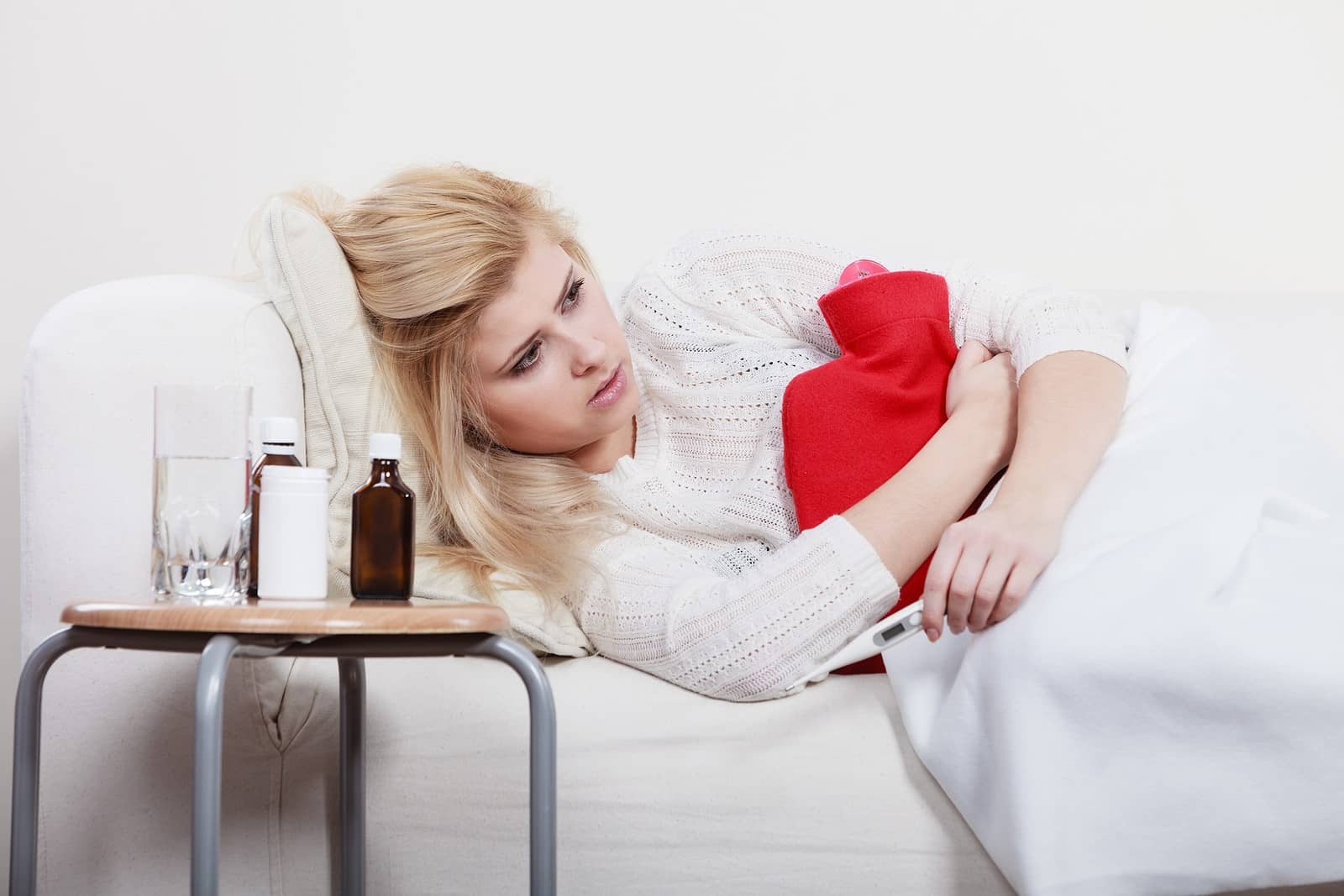
Do you suffer from painful menstrual cramps? If so, you are not alone. Many women experience cramps during their period each month. For some, the cramps are mild and manageable. For others, the cramps are debilitating and interfere with their daily lives. While the reason for developing painful cramps may require investigation, there are several things that you can do to help relieve the pain.
Menstrual Cramps Defined
Menstrual cramps are the sharp, agonizing pain you experience in your lower abdomen before and during your period. They are a few of the most frequent and bothersome symptoms of menstruation in women. Aching abdominal pain, pressure in the abdomen, and pain in the hips, lower back, and inner thighs are all signs of menstrual cramps. The symptoms of severe cramps may include nausea, vomiting, and loose stools. (WebMD)
There are two types of dysmenorrhea (cramps), and each has different causes.
Primary dysmenorrhea
Period pain caused by primary dysmenorrhea is the most prevalent type of cramps. The main culprit is typically an excess of prostaglandins, which your uterus produces. These substances cause your uterus’ muscles to contract and relax, which results in cramps. The pain may begin one or two days before menstruation. Though it can linger longer in some women, it often only lasts a few days. When you are younger, right after you start having periods, you typically experience your first period pain. Frequently, pain decreases as you age. The pain may subside once you’ve given birth. (Travers, 2022)
Secondary dysmenorrhea
Secondary dysmenorrhea frequently develops in later life. It is brought on by disorders like endometriosis and uterine fibroids that affect your uterus or other reproductive organs. Over time, this form of pain frequently gets worse. It could start before your period arrives and go on after it ends. (Travers, 2020)
Diagnosis of the Underlying Cause
Your doctor will probably take your medical history and conduct a physical exam to determine the underlying cause of painful menstruation. This will involve a pelvic examination to look for infections and abnormalities in your reproductive system. If your doctor suspects an underlying condition is the source of your symptoms, imaging tests can be performed. These may consist of an ultrasonogram, an MRI, or a CT scan. Your doctor might recommend a laparoscopy based on the findings of your imaging tests. A fiber-optic tube with a camera at the end is inserted into small incisions the doctor makes in your belly during this test to allow them to see within your abdominal cavity. (WebMD)
Home Remedies for Menstrual Cramps
Your doctor may prescribe aspirin or another pain medicine, such as acetaminophen, ibuprofen, or naproxen if you experience minor menstrual cramps. Applying heat to your abdomen with a hot water bottle, heating pad, or a warm bath may help manage the pain associated with cramps. Women have come to know several ways to help with the frequency and severity of cramps. This can include dietary changes, healthy choices like avoiding alcohol, nutritional supplements, and natural healing techniques such as acupressure, acupuncture, and exercise. Work with your doctor to create a personalized plan to address your pain. Additional medical intervention may be required if your cramps are severe. (WebMD)
If your period pain becomes chronic, you may wish to engage with an OB/GYN doctor specializing in reproductive healthcare. They are trained to deal with illness or injury that may be causing your pain. (Anna, 2016)
Pain May Be an Emergency
Having a painful period should be addressed with a physician to diagnose and treat the cause of the pain. Suffering in silence is unnecessary. There may be a time when you need to see an emergency care provider based on your symptoms. If you believe you are pregnant and are experiencing acute pain, seek immediate emergency care.
Works Cited
“Menstrual Cramps (Dysmenorrhea): Symptoms, Causes, Treatment, Prevention.” WebMD, WebMD, www.webmd.com/women/menstrual-cramps.
“Period Pain | Menstrual Cramps.” MedlinePlus, U.S. National Library of Medicine, medlineplus.gov/periodpain.html.
Travers, Colleen. “Symptoms of Menstrual Cramps.” Verywell Health, Verywell Health, 6 June 2022, www.verywellhealth.com/menstrual-cramps-symptoms-5071415.
Anna. “How Do I Know When to Go to the ER When Having Period Cramps? My Lower Back and Legs Are in Pain, and My Entire Pelvic Area Is Throbbing in Pain. I Can Barely Stand up.” Center for Young Women’s Health, 23 Aug. 2016, youngwomenshealth.org/2016/08/23/how-do-i-know-when-to-go-to-the-er-when-having-period-cramps/.
